Twenty-First Century Citizens
Dialogue
The moderator for Twenty-First Century Citizens was Flossie Chua, who works as an Interdisciplinary Consultant for ART21, and as the Project Manager for Harvard Graduate School of Education’s Project Zero. Founded in 1967, the program works to study and improve education in the arts.
Part 1
In the first session of Twenty-First Century Citizens, moderator Flossie Chua asked the speakers to introduce themselves before the discussion turned to issues of language and intellectual oppression, teaching history, and the increasing need for cultivating visual literacy in students.
Discussants:
- Arlene Shechet, Artist — New York, NY
- Fadwa Abbas, Independent Educator — New York, NY
- Dr. Jerry James, Director of Teaching and Learning, The Center for Arts Education (CAE) — New York, NY
- Sandra Jackson-Dumont, Frederick P. and Sandra P. Rose Chairman of Education, Metropolitan Museum of Art — New York, NY
Personal histories
Share your own history including information about your own education or approach to teaching.
Fadwa Abbas: I started out in a Catholic school in Sudan. There were 80 of us in the class. Our teacher would walk in sometimes and say, “I’m going to give you a preemptive beating today so you don’t act up.” I ended up going to four high schools in three different countries. I’m very much a product of [the] political situation in Sudan. We emigrated here because my father was a political prisoner and I ended up in a very fancy school in New York College. I’ve gone through an incredible educational journey and I wouldn’t trade it for the world, but it’s made it difficult for me to settle onto any particular path.
Jerry James: Everything we do at CAE [The Center for Arts Education] is in teams. We seldom work by ourselves and when we work in schools we don’t have any scripted curricula so we always work with teachers and principals there as our partners… So I’m a collaborative kind of person. I’m postmodern in that I don’t really believe in any one framework, and when I was hired to develop the Teaching and Learning Department at CAE, they said, “What is your philosophy? Developmentalism? Or arts integration or social practice?” And I said I really believe that there are many, many frameworks and I’m comfortable with the dissonances among them, and that’s where we’re going to build our department. And that’s what we have done. We do all kinds of things in terms of direct service and research projects.
Sandra Jackson-Dumont: I grew up in theater and dance. My dance teachers – there were two – one was a community person who came back and said that in order to actually imagine what you want to exist in the world, you have to be curious. She bred curiosity in us. And the other person is a woman named Judith Holton who danced with Sun Ra and is on Space is the Place. She’s an amazing lady, and she talked about the black imagination to young people. That helped us understand that, in our under-resourced community we could actually imagine some other place. It didn’t have to be like Heaven, …but that you could actually create this other place that was about experimentation and designing the person you wanted to be without giving up your roots.
Arlene Shechet: I had an academic job for 15 years, teaching in art schools. I taught at RISD and Parsons and when my kids were in public school in New York City [I taught] in Lower Manhattan… I discovered that there was no arts program in this little local school. So I would teach at the beginning of the day at Parsons, and then I’d walk downtown and volunteer to teach the exact same curriculum in Lower Manhattan to kindergarten through 2nd graders.
Art education in the 21st century
What does art contribute to education?
Arlene Shechet: I feel that openness is what [art education] can offer—the lack of specifics, solutions, the peeling away of the idea that there is an answer—the feeling that art is so valuable because it really offers questions. It doesn’t offer solutions. It even creates anxiety. People are worried about it. I like all of that stuff. I feel like all of that is super useful and mimics the biggest things that we have to address in the world, and in our daily lives. When Mark Bradford was talking, he said that he resists the term “art” and I resist it, too. We don’t even know what we’re talking about anymore. I don’t like the term creativity. I don’t like any of those terms because they are like the term “spirituality”—what does that mean?
Jerry James: Inquiry, collaboration, and independent learning. When I was in school we had serious sequential arts education for a few of us. The rest of the folks in the class were taking it as an elective. The education was targeted toward the students who were interested in developing a particular skill set. I think that skill set is no guarantee that you’re going to get into art school or be a success in life so we have to think in broader terms.
Integrating art education as core curriculum
How can we position art education as a core school subject that will be essential to student learning?
Fadwa Abbas: The overwhelming experience of children interacting with information now, is visual. It is not in text. It’s not in audio. It’s visual. What we’re not doing is teaching children how to navigate this overwhelming world of visual experience. I realized as a language arts teacher, the entryway for me always has to be visual…
Do you remember the Kony 2012 campaign a couple of years ago? That’s an extreme expression of the kind of predatory humanitarian industry that takes place, but the kids were obsessed. They were like, “Oh my God, we have to get this guy.” They came running to me: “Bake sale! Raise money! Send it to them!” All I did was have them sit down and look at the photograph, one of the promotional photographs of the three guys who were in this organization, posed with coiffed hair, machine guns, and some generic African beaded bracelet, surrounded by the soldiers from the SPLM [Sudan People’s Liberation Movement]… They started looking at that picture and deconstructing it. They realized that the centerpiece was the three white men who ran the organization. One kid jumped up and said, “Oh my god, the SPLM guys are totally fading into the bush! They’re not even human entities in this picture.” Then they became very offended and realized that there was something really wrong with the visual representation of this supposedly benevolent narrative… As much as they need instruction in math or science or in language arts, we need to create a platform and a forum for students where they can explore this ocean of visual imagery that they are constantly experiencing.
Arlene Shechet: I believe in failure. What we can offer is that failure is part of the key to creating something. It doesn’t just flow out, and it’s not just right one way; things can go bad, things look bad. In my ART21 segment – and I didn’t remember this at all, but I keep getting quoted – I said something like, “Being an artist you have to have a big appetite for ugly.” And you do. You have to be in the studio and be looking at something that’s just terrible, and somehow get over the fear that that’s a bad thing, and see it as the window to the next thing that’s going to happen, as a provocation.
Sandra Jackson-Dumont: There are people that exist in different worlds who have their own languages… Language that someone [else] is speaking may be foreign to you, but the language of environmental justice, which I’m so invested in, and food justice, is intellectually oppressive. I think it creates incredible distance between the people that the policies are being made for, and the policymakers. And so people are treated like subjects as opposed to partners and collaborators… Language is necessary in order to communicate articulately. I’m not opposed to certain language; I’m opposed to you not defining it when you’re talking to people who don’t understand it.
Part 2
In the second session of Twenty-First Century Citizens moderator Flossie Chua opened the conversation by asking what the panelists hoped their students would be able to do or know once they left school. The discussion moved to ideas about technology in education, the role of un-learning in education, and the importance of critical thinking in academic contexts.
Discussants:
- Mark Dion, Artist — New York, NY
- John Abodeely, Deputy Director, The President’s Committee on the Arts and Humanities — Washington, DC
- Raygine C. DiAquoi, PhD Candidate, Harvard University — Boston, MA
- Zipporiah Mills, Principal, PS 261 Philip Livingston — New York, NY
Lifelong lessons
What do you hope students will know or be able to demonstrate once they leave school?
Zipporiah Mills: It’s cliché but… I want children to be lifelong learners. I think that if we’re not lifelong learners we become stagnated. We listen to Fox News and we believe that what they say is real because we don’t ever want to learn something else. I said to [LaToya Ruby Frazier] that because we are a school that’s focused on the arts, at the same time it’s as important to me that our children learn what social activism is. To watch her integrate those two things and to present those two things was really fascinating to me. And I just thought this is what I want to see my students doing one day.
John Abodeely: The very first thing on my list would be that I would want him or her to have emotional intelligence enough to have resilience. I think when it comes to complexity or it comes to anything particularly challenging, you have to have a certain amount of emotional mettle to bounce back and to gain wisdom from a difficult experience. And that’s ideal, because that’s inevitable. Having a negative experience is inevitable. The second thing I’d say is… to be open and receptive to new understanding and new knowledge, new perspectives.
Mark Dion: It’s hard to go it alone. That’s what I try to emphasize in the program I teach at Columbia. I’ve been at Columbia for the last 12 years as a mentor for graduate school students in the Fine Arts Department, and those people are very prepared. They’re too prepared in some ways, and they can be very isolated. One of the things that they don’t do – and there’s no structure for them to do – is hang out. When I was in art school that’s all we did, was hang out. And that was an incredibly important thing. And the people I hung out with 30-something years ago are still the people I hang out with today, and they’re still my most valued critics and the audience I think of. But because the art education programs at universities, especially in graduate programs have become so professionalized, hanging out as artists is seen as something not productive… That’s what I try to emphasize, that time together and that construction of a support network, because if you don’t build it then it’s kind of your last chance.
Integrating technology
How do you integrate technology and social media into education? What role does technology play in 21st century learning?
Flossie Chua: We assume that because now kids have access to the great wide world out there through digital media, that they’re actually making these connections. The Macarthur [Foundation], …they tracked a great number of kids and looked at their Facebook interactions. They found that kids could conceivably talk to anyone in the world, but that their networks remain incredibly local. They were talking with people on Facebook that they could talk to everyday in school… They have those tools but they’re not using them to branch out. Ethan Sackman who wrote this report talked about how we need to introduce them to people who can help them navigate these spaces.
Raygine DiAquoi: There was a class that I was teaching last semester and we utilized Twitter in a really fun way. I think a lot of people use Twitter in this way – they have hashtag conversations. One way that I see this being a useful tool for art education is to have students interact with other students via a hashtag on a particular piece of art, or on a particular artist. This was a critical race theory class and we ended up speaking to and having conversations with students across the country who were also taking a similar class. Some people became friends and they ‘mentioned’ and they ‘followed’ and they ‘DMed’ and they ‘favorited’. Then they began to see, “Wow, not only is it cool that I’m talking to this random person, but this random person actually has interests just like mine and they think about this piece of text or issue, or whatever it is, in the same way that I do – or we disagree and we’re going to have an argument on Twitter, which is really cool.”
Teaching critical thinking
How can we un-learn or re-learn? How do we create a culture where students think critically and have the agency to ask questions?
Zipporiah Mills: I was just thinking about the difference between how we were taught. We talked about the difference of being a facilitator and this traditional way where someone stood in front of the classroom and they gave you knowledge, and that was it, right? So we need to un-think that… When you teach children to construct meaning, part of that has to be that you teach children to be critical thinkers. You teach children to ask questions. You teach children to look at each other and agree or disagree. That, in our school, is everything. It’s in the art. It’s in writing. They are always on the rug, teacher says something, teacher reads something, turn to your neighbor and tell them what you think. If someone shares some information, do you agree, do you disagree and do you have a reason why?
Raygine DiAquoi: We so often hang on to the idea that we must create safe spaces, not thinking about how a space that’s safe for one person is not safe for another. I think if we’re moving people to un-think things, to think critically or to be vulnerable, we have to move away from this idea of a safe space. We need to let children, or young adults understand that this isn’t about appeasing everyone. This is about learning how to have a dialogue when we disagree, being able to bring points up about those disagreements, and being able to separate those disagreements or different viewpoints from the person that you know.
Mark Dion: I think in fine art education, there is this technique… the fulcrum of how we teach fine art, which is critique. Everyone takes a turn, everyone gives their assessment. Everyone knows that the harder that assessment is, the more valuable it is for you as a maker. And the easiest thing for people to do is to step back and say, “Oh very interesting. You’re on the right road.” The hardest thing for them to do is to be hard and to be difficult and to be critical, but that’s what you learn from the most. So I think that’s a central part of the fine art education technique that is… a very positive way of creating a space that is contingently unsafe for you, but you gain a lot from it.
Moderator’s dialogue reflection
How does one prepare for a conversation on Twenty-First Century Citizens, especially with a panel as richly diverse as the ones that spent time with us at Creative Chemistries? I nursed an insane hope that we would be able to land on a recommendation for how art might be a compelling partner for other disciplines in preparing young people for the complex and largely unknown world of tomorrow. In short, some sort of answer to a million-dollar question. What came out of the dialogues I moderated was much, much more. Each dialogue sowed fertile seeds for thinking about how we might challenge and reframe “learning as usual” in schools today.
One such seed that has resonated with me since, and that continues to intrigue me, is this: What do we need to get serious about if we are to develop engaged citizens for the contemporary world? The 21st century offers possibilities and opportunities, but also engenders anxiety and a sense of dis-ease. How do we ensure that the capacities we value – inquiry, collaboration, lifelong learning, independent learning, critical thinking – become foundational in the life of the classroom or learning context? A single word encapsulates the myriad responses to this puzzle during the dialogues – connections. How are things put together? How are they apart? What exists in the spaces between things, and do we / should we / can we bridge them? When does a bridge become a breach?
Imagine an education that provokes learners to get serious about creating connections, understanding disjunctions, holding the expanse of time, space and thought in a continuum, and comfortably straddling the tensions that inevitably arise from holding the ends… How might art education, with its potential for engaging and disrupting, enriching and infiltrating, unifying and discombobulating, help us lean into these tensions, and navigate the spaces of knowing and not knowing?
–Flossie Chua
Saturday, February 21st 2015
11:45 a.m. / 1:30 p.m.
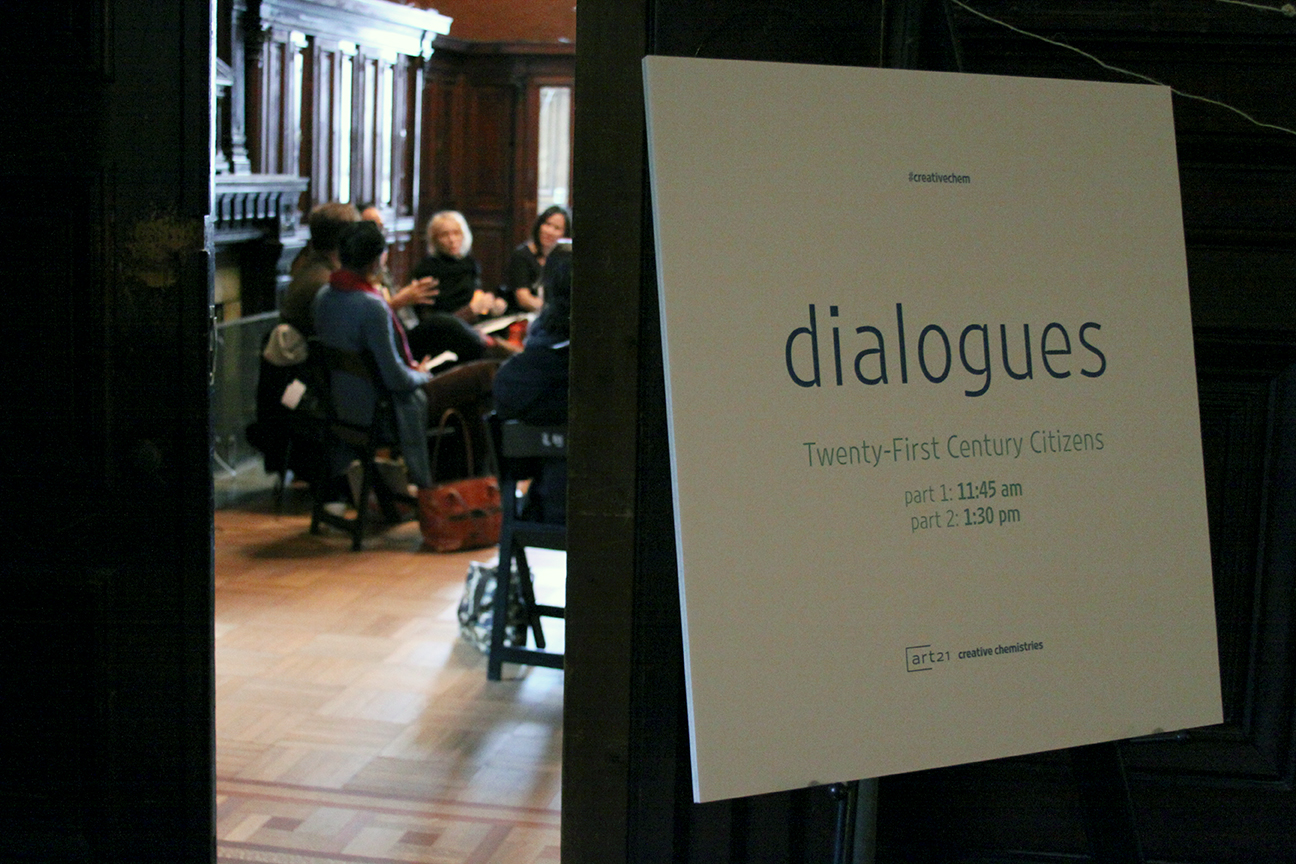

I really believe that there are many, many frameworks and I’m comfortable with the dissonances among them…
— Jerry James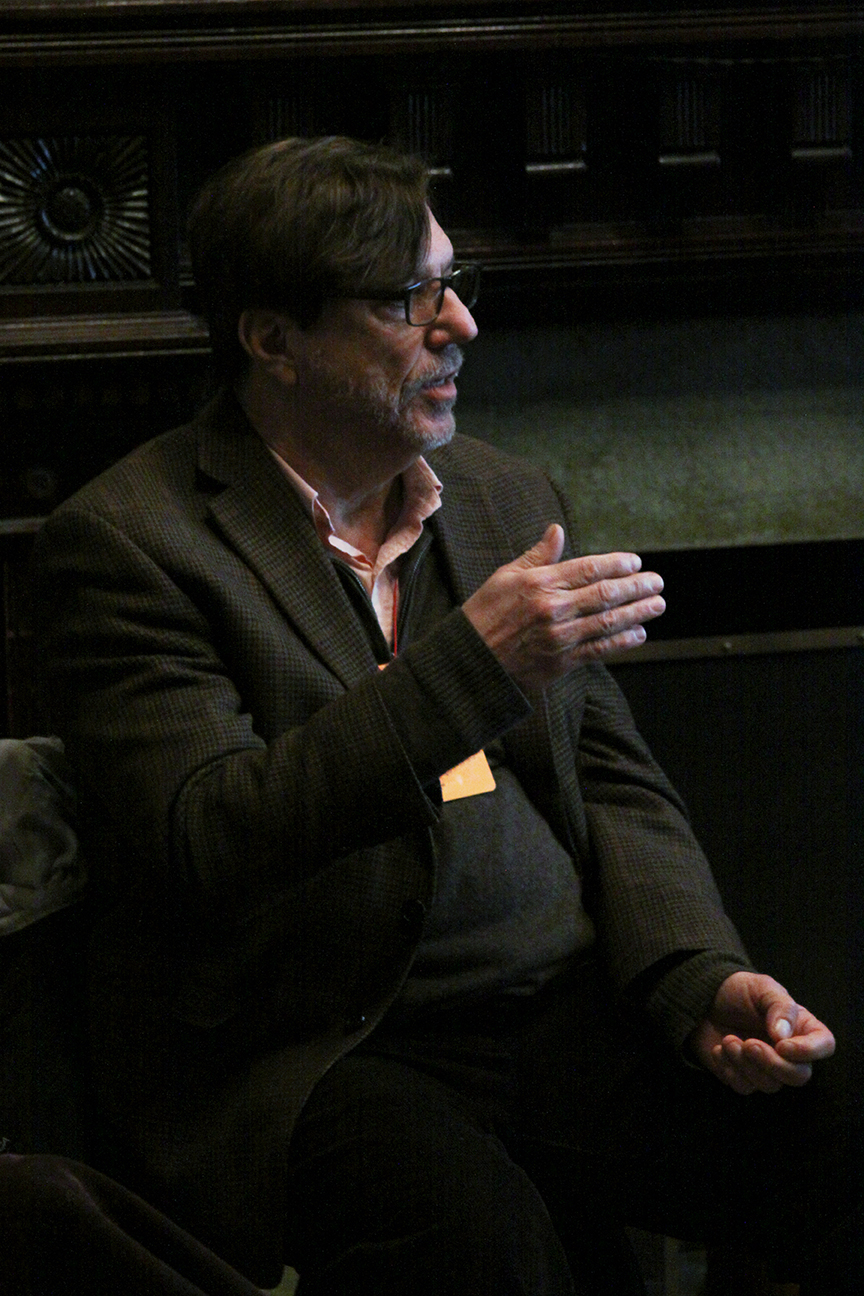
Art is so valuable because it really offers questions. It doesn’t offer solutions. It even creates anxiety. People are worried about it.
I like all of that stuff. I feel like all of that is super useful and mimics the biggest things that we have to address in the world, and in our daily lives.
— Arlene Shechet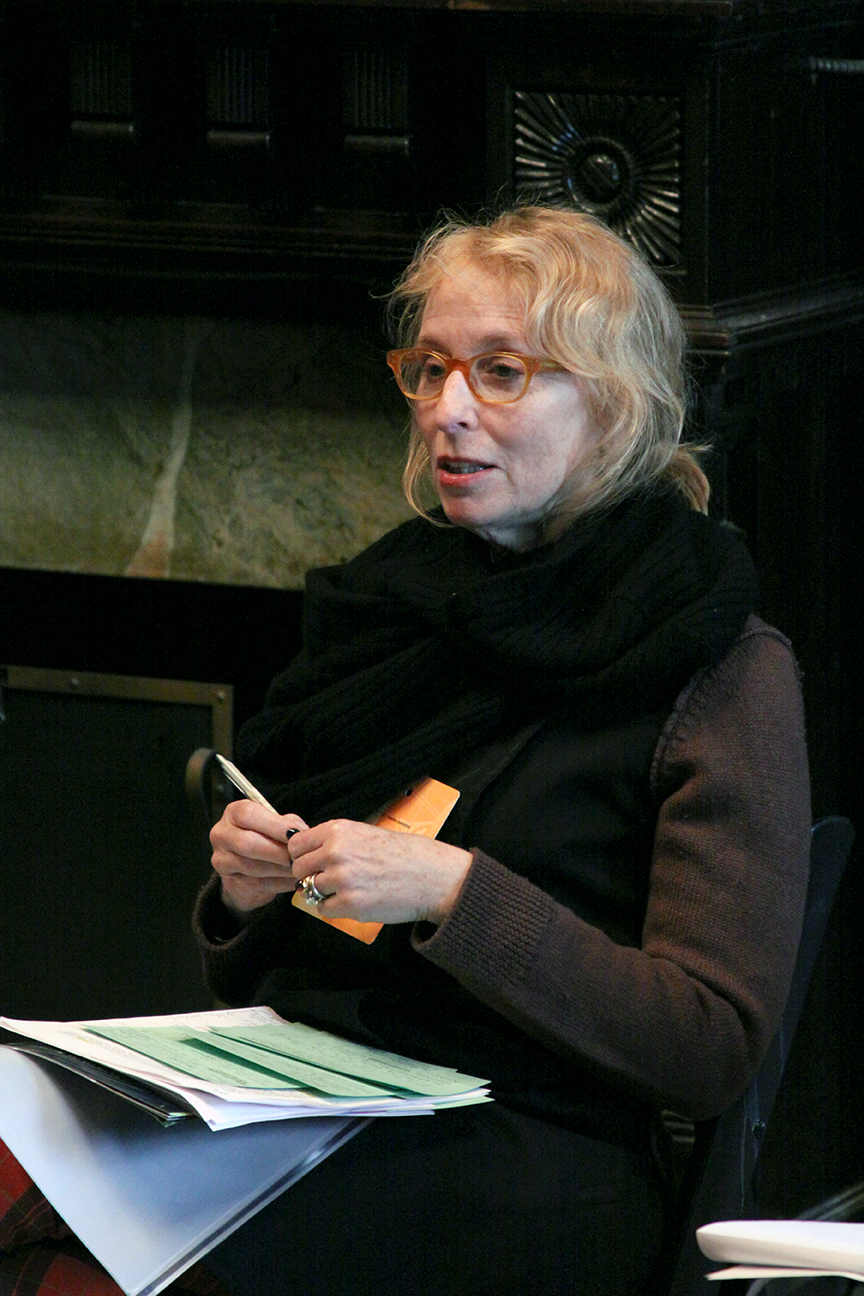
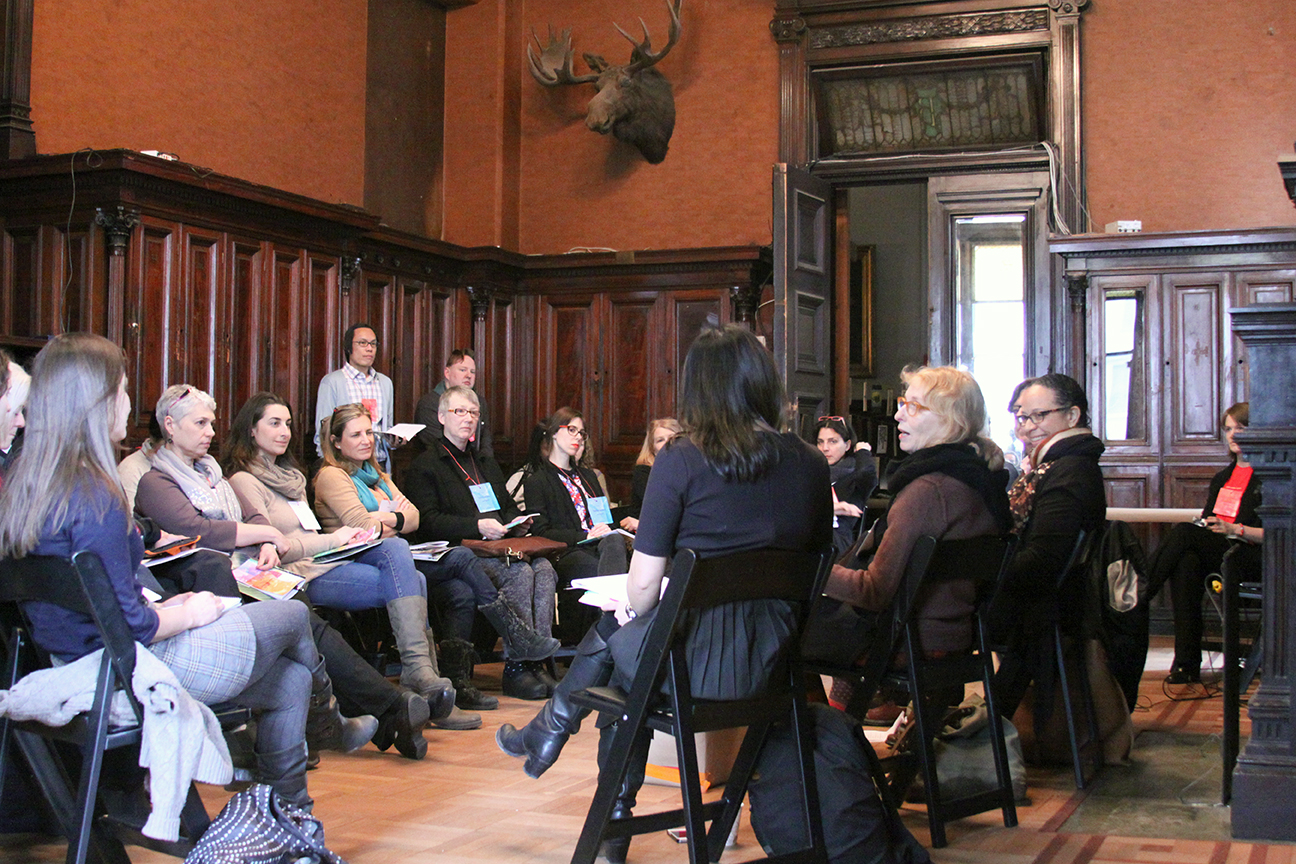
The language of environmental justice, which I’m so invested in, and food justice, is intellectually oppressive. I think it creates incredible distance between the people that the policies are being made for, and the policymakers…
Language is necessary in order to communicate articulately. I’m not opposed to certain language; I’m opposed to you not defining it when you’re talking to people who don’t understand it.
— Sandra Jackson-Dumont

When it comes to complexity or it comes to anything particularly challenging, you have to have a certain amount of emotional mettle to bounce back and to gain wisdom from a difficult experience.
— John Abodeely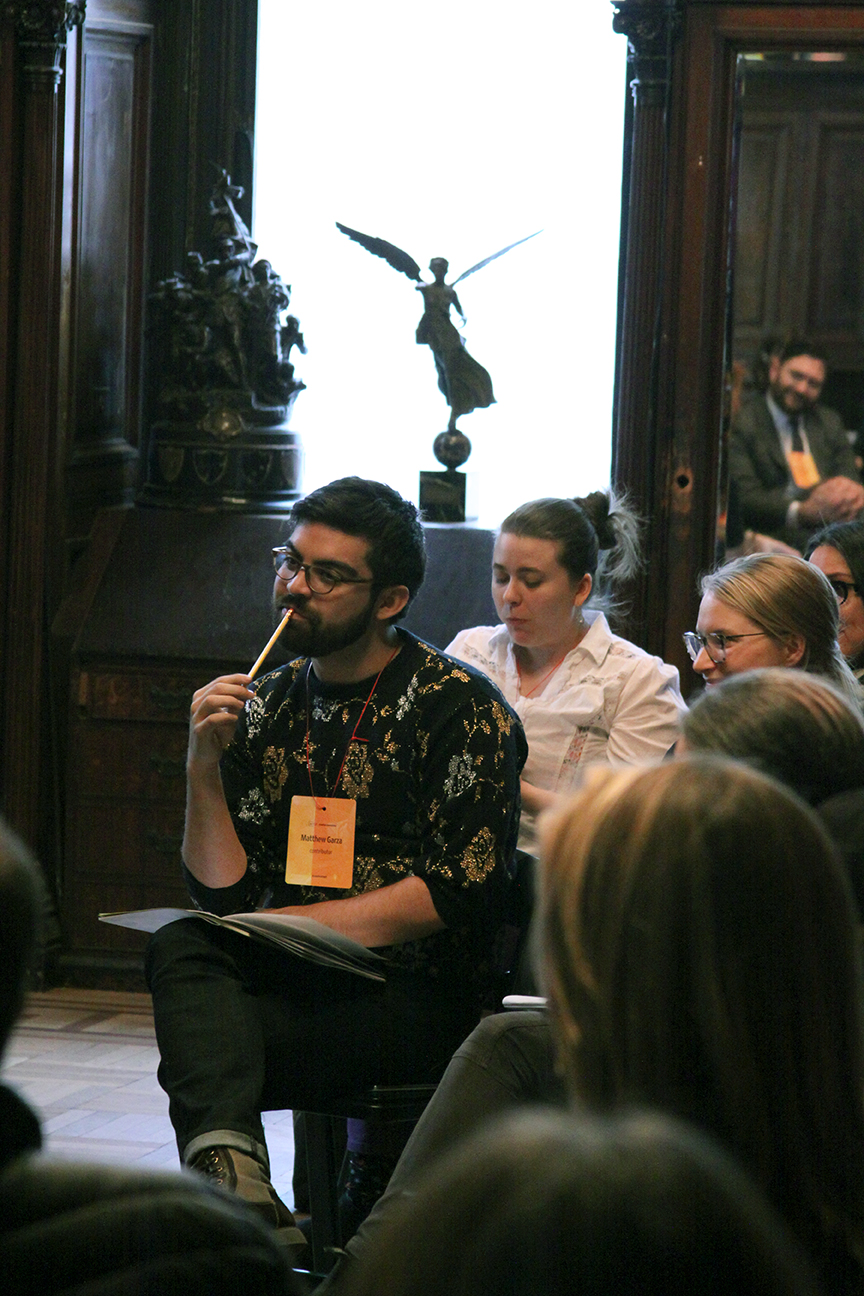

The Macarthur Foundation… tracked a great number of kids and looked at their Facebook interactions. They found that kids could conceivably talk to anyone in the world, but that their networks remain incredibly local…
They have those tools but they’re not using them to branch out.
— Flossie Chua
We so often hang on to the idea that we must create safe spaces, not thinking about how a space that’s safe for one person is not safe for another…
We need to let children, or young adults understand that this isn’t about appeasing everyone.
This is about learning how to have a dialogue when we disagree.
— Raygine DiAquoi


